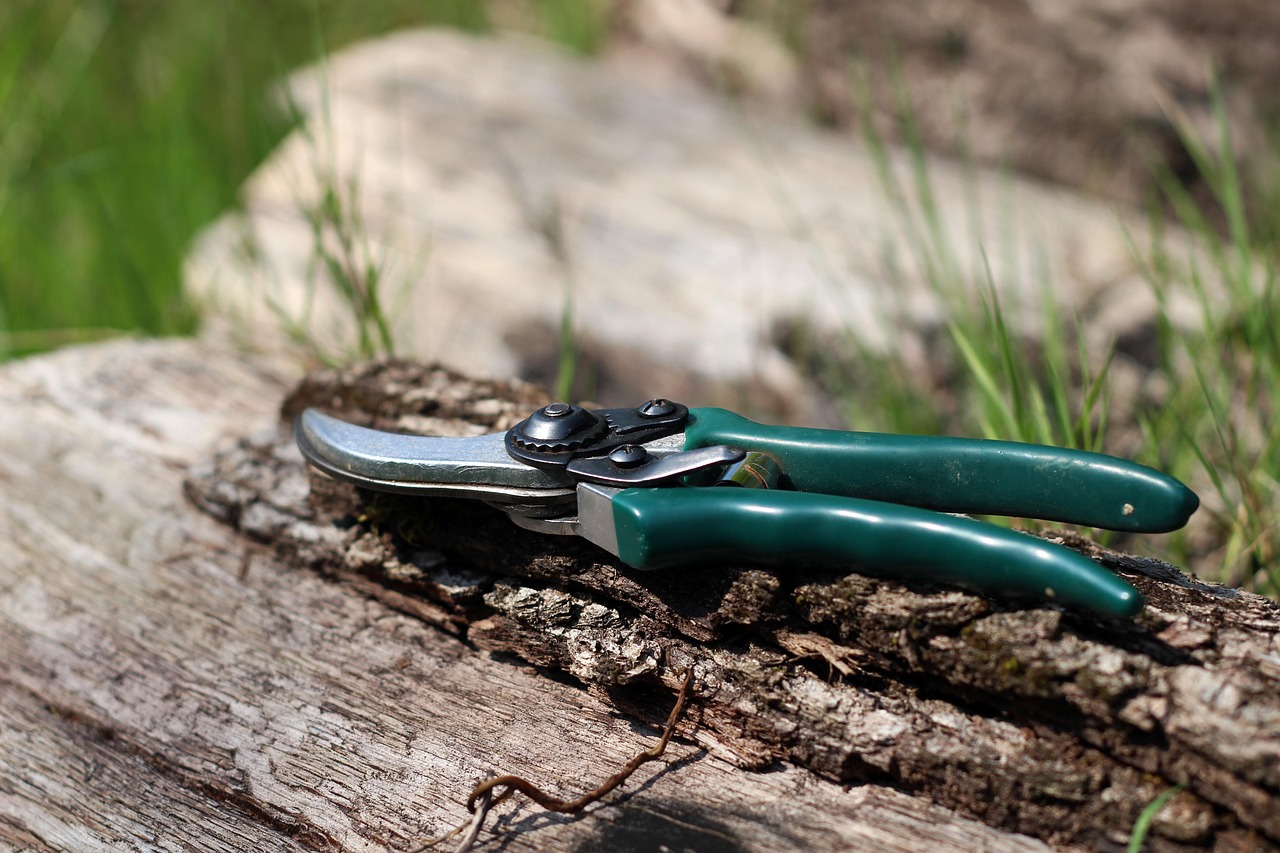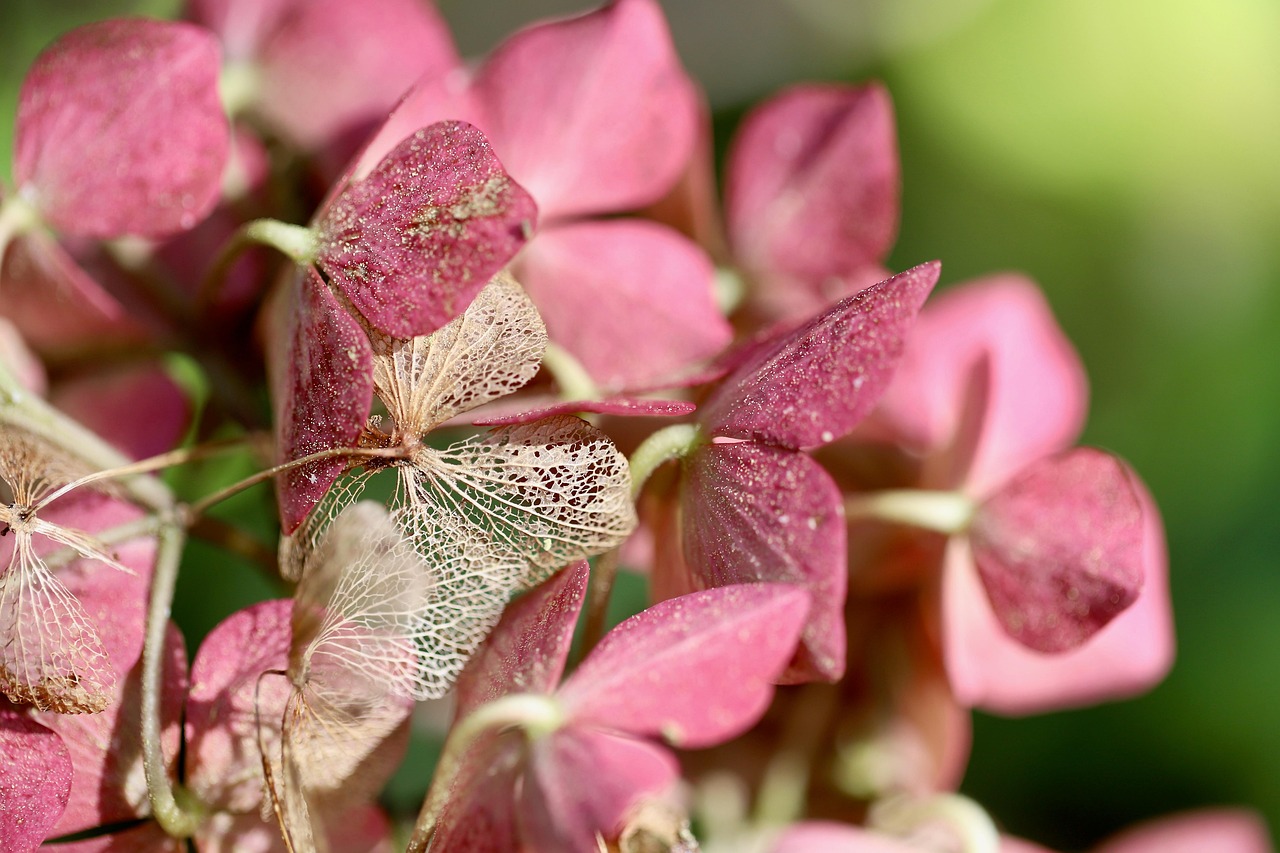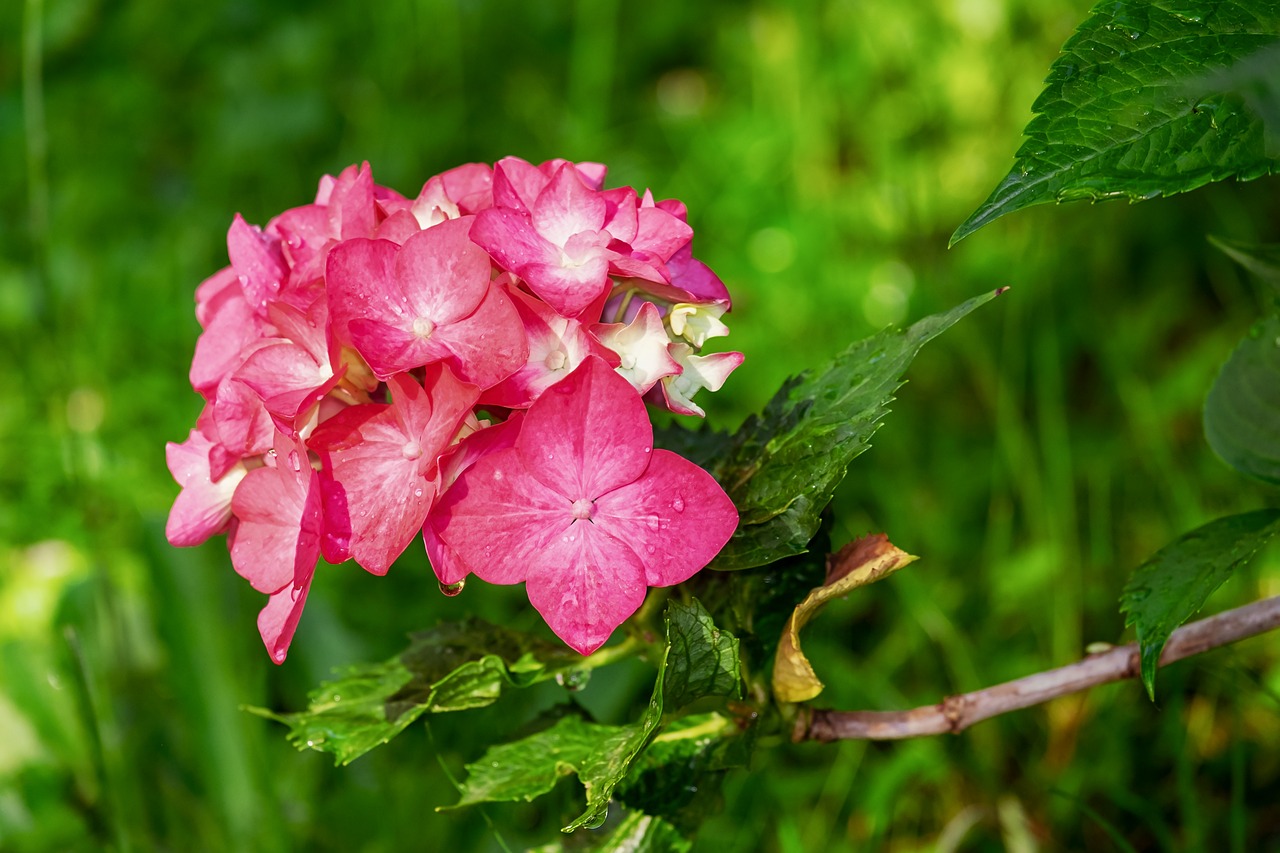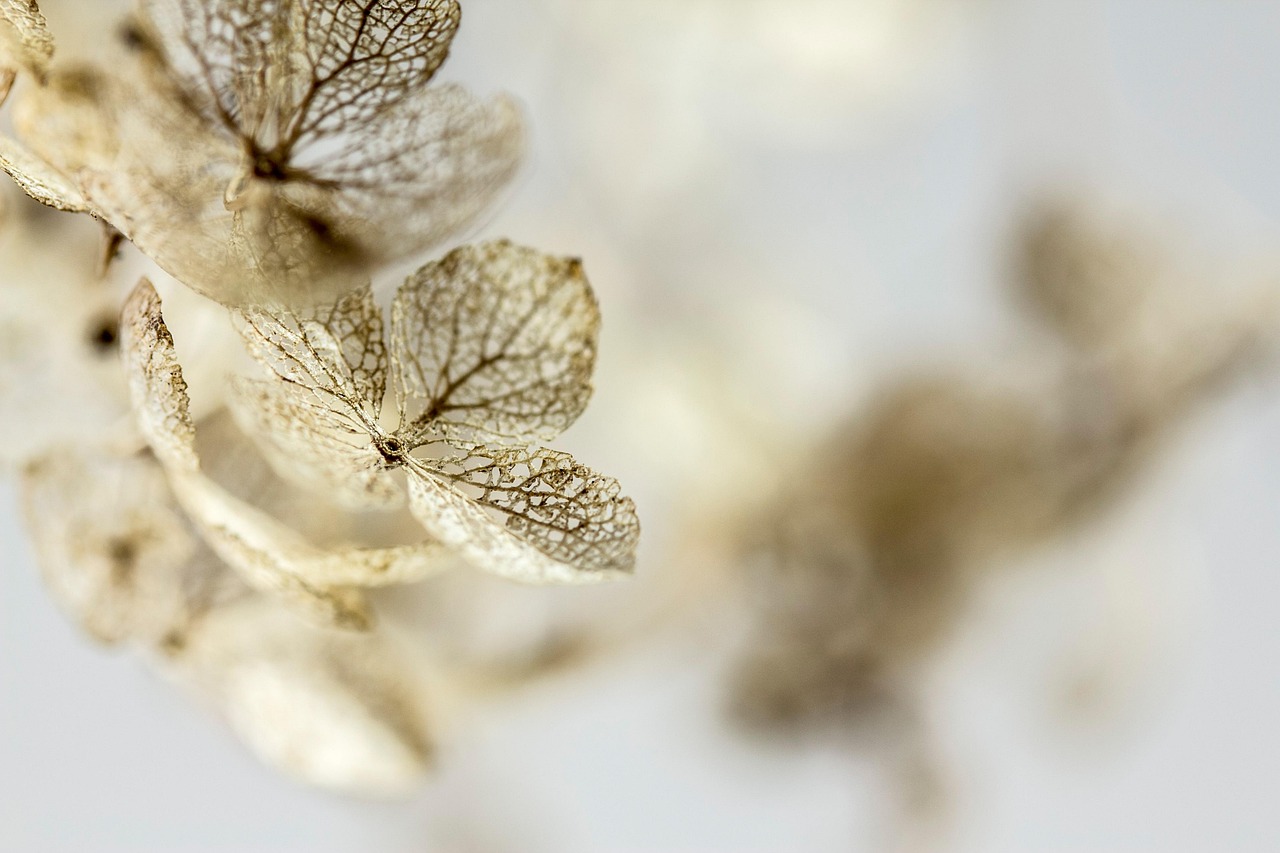To achieve beautiful, big flowers on your hydrangea tree, pruning is essential. The best time to prune is in late winter or early spring, before new growth begins. Follow specific steps based on the type of hydrangea you have to ensure optimal blooming.
Hydrangeas are beloved for their stunning, large blooms that can transform any garden into a picturesque landscape. Among the various types of hydrangeas, the hydrangea tree, or tree hydrangea, stands out. This plant features a woody structure, making it a unique addition to gardens and landscapes. To maintain its health and promote vibrant flowers, proper pruning is crucial.

Pruning hydrangeas is not just about cutting back branches. It involves understanding the growth habits of the plant. Different species of hydrangeas flower on new wood or old wood. Knowing this distinction helps you decide when and how much to prune. For example, hydrangeas that bloom on old wood should be pruned after they flower, while those that bloom on new wood can be pruned in late winter.
| Hydrangea Type | Blooming Period | Best Pruning Time |
|---|---|---|
| Bigleaf Hydrangea (Hydrangea macrophylla) | Summer | After flowering |
| Panicle Hydrangea (Hydrangea paniculata) | Summer to fall | Late winter or early spring |
| Oakleaf Hydrangea (Hydrangea quercifolia) | Summer | After flowering |
| Smooth Hydrangea (Hydrangea arborescens) | Summer | Late winter or early spring |
Understanding Hydrangea Growth Patterns
Hydrangeas are versatile plants that can flourish in a variety of conditions. However, their growth patterns can differ significantly depending on the type. For example, Bigleaf hydrangeas produce flowers on last year’s growth, meaning they require careful timing when it comes to pruning. If pruned too late, you may cut off the buds that would develop into flowers.
On the other hand, Panicle hydrangeas bloom on new growth. This characteristic allows for more flexibility in pruning. You can cut them back hard in late winter or early spring to encourage vigorous new growth and larger blooms. Understanding these patterns will help you make informed decisions about how to care for your hydrangeas.

In addition to knowing your plant type, it’s essential to assess the overall health of your hydrangea before pruning. Look for signs of disease or damage, such as dead branches or discolored leaves. Healthy plants will produce more vigorous blooms and require less maintenance. Always use clean, sharp tools to make precise cuts. This minimizes stress on the plant and promotes quicker healing.
Essential Pruning Steps for Hydrangea Trees
The pruning process can seem daunting for many gardeners, but by breaking it down into simple steps, it becomes more manageable. Here are essential steps to follow when pruning your hydrangea tree:
- Assess the Plant: Begin by examining your hydrangea tree. Identify any dead or damaged branches that need to be removed.
- Choose the Right Time: Based on the type of hydrangea you have, determine the best time for pruning.
- Gather Tools: Use sharp pruning shears and loppers for thicker branches. Always sanitize your tools to prevent disease.
- Remove Dead Wood: Start by cutting away any dead or diseased branches at their base.
- Shape the Plant: Trim back overgrown areas to maintain a balanced shape. Aim for a rounded form.
- Encourage New Growth: For varieties that bloom on new wood, prune back last year’s growth to about one-third of the plant’s height.
- Monitor Growth: After pruning, keep an eye on your hydrangea for signs of new growth and adjust care as needed.
By following these steps, you will set your hydrangea tree up for success. Regular maintenance and proper pruning will lead to healthier plants with larger, more beautiful blooms.

The visual appeal of hydrangea trees makes them popular in gardens and landscapes. With their stunning flowers and lush foliage, they are a favorite among horticulturists and home gardeners alike. By understanding how to prune them correctly, you can enjoy their beauty for years to come.
As you prepare for the pruning season, consider documenting your hydrangea’s growth stages. This practice will help you understand how your tree responds over time and refine your techniques for even better results each year.
Tools and Techniques for Pruning Hydrangea Trees
Having the right tools is essential for effective pruning of hydrangea trees. Using appropriate tools not only makes the process easier but also helps ensure clean cuts, promoting faster healing for the plant. Below is a list of essential tools you will need for pruning:

- Pruning Shears: Ideal for small branches and delicate stems, pruning shears allow for precise cuts.
- Loppers: These are designed for thicker branches, providing extra leverage and cutting power.
- Hand Saw: Useful for removing larger branches that cannot be handled by loppers.
- Gloves: Protect your hands from thorns and sharp edges while working.
- Sanitizing Solution: Keep your tools clean to prevent the spread of disease among plants.
When using these tools, ensure they are sharp and well-maintained. Dull blades can crush stems rather than making clean cuts, which can harm the plant. Regularly sanitize your tools before and after use to reduce the risk of transmitting infections.
Pruning Techniques to Encourage Healthy Growth
Adopting proper pruning techniques can significantly impact the health and appearance of your hydrangea tree. Here are some techniques to consider:
- Thinning: This technique involves selectively removing branches to improve air circulation and light penetration. It helps reduce disease risk and encourages better blooming.
- Heading Back: Cutting back the tips of branches promotes bushier growth and can lead to more flowers. Aim to cut just above a node or leaf.
- Crown Reduction: If your hydrangea tree is too tall, consider reducing its height by cutting back the tallest branches. This should be done carefully to maintain balance.
- Renewal Pruning: For older hydrangeas, this technique involves cutting back a third of the oldest branches to their base each year. It encourages new growth and rejuvenates the plant.
Incorporating these techniques can enhance the overall structure of your hydrangea tree, leading to a more vibrant display of flowers. Always keep in mind the specific type of hydrangea you have when deciding which techniques to apply.
Seasonal Care After Pruning
After pruning, proper care is essential to help your hydrangea tree recover and thrive. Here’s how you can support your plant during the growing season:
- Watering: Hydrangeas require consistent moisture, especially after pruning. Water deeply once a week, allowing the soil to dry slightly between watering.
- Fertilizing: Use a balanced fertilizer in early spring to promote healthy growth. Follow the package instructions for application rates.
- Mulching: Applying a layer of mulch around the base of your hydrangea tree helps retain moisture and suppress weeds. Organic materials like bark or wood chips are ideal.
- Pest Management: Monitor your plant for pests such as aphids or spider mites. Treat any infestations promptly with insecticidal soap or other organic methods.
Each of these care steps plays a vital role in supporting your hydrangea tree’s recovery after pruning. Consistent care will enhance its growth and flower production throughout the season.
Common Mistakes to Avoid When Pruning Hydrangeas
Pruning can be intimidating, especially for novice gardeners. To help you achieve the best results, here are some common mistakes to avoid:
- Pruning at the Wrong Time: Timing is critical. Pruning too early or too late can result in the loss of blooms.
- Over-Pruning: Cutting back too much can stress the plant and reduce flowering potential. Always leave some healthy buds on each branch.
- Ignoring Plant Type: Not all hydrangeas require the same pruning approach. Make sure to know whether your variety blooms on old or new wood.
- Poor Technique: Jagged cuts can lead to injury and disease. Always use sharp tools and make clean cuts.
Avoiding these mistakes will ensure that your hydrangea trees stay healthy and produce abundant blooms year after year. Take time to learn about your specific plant’s needs and adjust your pruning practices accordingly.
The Importance of Observation During Growth
Observing your hydrangea tree regularly throughout its growth cycle is crucial for successful gardening. Not only does it help you notice any issues early on, but it also allows you to understand how your pruning efforts impact its development. Here are some key aspects to observe:
- Bloom Quality: Take note of flower size and color changes. This can indicate how well your pruning methods are working.
- Leaf Health: Monitor leaves for signs of yellowing or browning, which may indicate nutrient deficiencies or pests.
- Growth Patterns: Track how your hydrangea grows each season. This information is invaluable for making future pruning decisions.
This observational practice not only fosters a closer connection with your garden but also equips you with insights that lead to better care outcomes for your hydrangea trees.
Hydrangea Tree Varieties and Their Specific Pruning Needs
Understanding the different varieties of hydrangeas is essential for effective pruning. Each type has unique characteristics that influence how and when you should prune. Below is a detailed overview of some popular hydrangea tree varieties and their specific pruning requirements.
Bigleaf Hydrangea (Hydrangea macrophylla)
Bigleaf hydrangeas are known for their large, showy blooms. They typically produce flowers in shades of blue, pink, or purple, depending on soil pH. Pruning should be done after the flowers have faded to avoid removing next year’s buds.
- Pruning Time: Late summer to early fall, after flowering.
- Pruning Technique: Remove dead or weak stems and shape the plant as needed. Avoid heavy pruning to retain flower buds.
Panicle Hydrangea (Hydrangea paniculata)
Panicle hydrangeas are characterized by their cone-shaped flower clusters. These plants bloom on new wood, making them more forgiving during the pruning process.
- Pruning Time: Late winter or early spring before new growth begins.
- Pruning Technique: Cut back hard to about one-third of the plant’s height. This encourages vigorous new growth and larger blooms.
Oakleaf Hydrangea (Hydrangea quercifolia)
Oakleaf hydrangeas feature unique, oak-shaped leaves and produce white flowers that turn pink as they age. They thrive best with minimal pruning.
- Pruning Time: After flowering in late summer.
- Pruning Technique: Remove dead or damaged branches and thin out crowded areas. Avoid severe cuts to maintain the plant’s natural shape.
Smooth Hydrangea (Hydrangea arborescens)
Smooth hydrangeas are known for their round flower clusters, such as the popular ‘Annabelle’ variety. They bloom on new wood, making them easy to prune.
- Pruning Time: Late winter or early spring.
- Pruning Technique: Cut back to 6-12 inches from the ground to promote strong new growth and larger blooms in summer.
Seasonal Changes and Their Impact on Pruning
The changing seasons can significantly affect the health and blooming of your hydrangea trees. Understanding these seasonal trends can help you make informed decisions about pruning and care.
Spring: Awakening Growth
In spring, hydrangeas begin to show signs of new growth. This is an excellent time to assess the plants after winter dormancy. Look for healthy buds and any signs of damage from frost or cold weather.
Summer: Blooming Season
During summer, hydrangeas produce their beautiful flowers. It is essential to avoid heavy pruning at this time, as it can remove developing flower buds. Instead, focus on deadheading spent blooms to encourage further flowering.
Fall: Preparing for Dormancy
As temperatures cool in fall, hydrangeas prepare for dormancy. This season is ideal for light pruning and shaping, particularly for varieties that bloom in summer. Removing any dead or damaged wood now will help the plant remain healthy through winter.
winter: Dormant Care
In winter, hydrangeas are dormant, making it a suitable time for more extensive pruning. However, avoid cutting during severe cold snaps or when the ground is frozen. Take this time to check for any structural issues that may need addressing once spring arrives.
Understanding Soil and Its Role in Hydrangea Health
The soil in which your hydrangea tree grows plays a crucial role in its overall health and blooming capability. Here are important factors regarding soil to consider:
| Soil Type | Description | Recommended pH Level |
|---|---|---|
| Sandy Soil | Good drainage but may require more frequent watering. | 5.5 – 6.5 |
| Clay Soil | Poor drainage; amend with organic matter to improve structure. | 5.5 – 7.0 |
| Silty Soil | Retains moisture well; good nutrient-holding capacity. | 5.5 – 6.5 |
| Loamy Soil | Ideal balance of sand, silt, and clay; excellent for hydrangeas. | 6.0 – 7.0 |
The pH level of your soil can also affect the color of your hydrangea blooms. For example, more acidic soil typically results in blue flowers, while alkaline conditions lead to pink flowers. Testing your soil pH annually can provide valuable insights into how best to adjust your care practices.
Incorporating organic materials such as compost can improve soil structure and nutrient content, promoting robust growth and vibrant blooms in your hydrangea trees.
Common Pests and Diseases Affecting Hydrangea Trees
To ensure your hydrangea trees thrive, it’s essential to be aware of common pests and diseases that can affect their health. By recognizing these issues early, you can take action to mitigate damage and promote recovery.
Pests
- Aphids: These small insects suck the sap from leaves, leading to yellowing and wilting. They can be controlled with insecticidal soap or neem oil.
- Spider Mites: These pests thrive in dry conditions and can cause stippling on leaves. Increase humidity around the plant or use miticides for control.
- Scale Insects: Scale can appear as small bumps on stems and leaves. They weaken the plant by sucking sap. Remove them manually or treat with horticultural oil.
- Japanese Beetles: These beetles feast on flowers and foliage, causing significant damage. Handpicking or using traps can help reduce their numbers.
Diseases
- Powdery Mildew: This fungal disease appears as a white coating on leaves. Improve air circulation and use fungicides to manage it.
- Root Rot: Caused by overwatering or poor drainage, root rot leads to wilting and yellowing leaves. Ensure proper soil conditions and avoid waterlogging.
- Leaf Spot: Various fungi can cause dark spots on leaves, leading to premature leaf drop. Remove affected leaves and apply fungicides if necessary.
Regular monitoring for pests and diseases can help you maintain the health of your hydrangeas. Early intervention is key to preventing more severe issues down the line.
Enhancing Bloom Color Through Soil Management
The vibrant colors of hydrangea blooms can be influenced by soil conditions, particularly pH levels. As mentioned earlier, adjusting soil pH can shift flower colors from blue to pink or vice versa.
To achieve blue flowers, aim for acidic soil with a pH of 5.5 or lower. You can lower soil pH by adding:
- Sulfur: Elemental sulfur is effective in reducing pH over time.
- Aluminum Sulfate: This compound not only lowers pH but also provides aluminum, which enhances blue pigmentation in blooms.
For pink flowers, you should raise the soil pH above 6.0. This can be done by incorporating:
- Lime: Adding garden lime raises the pH and supplies calcium, beneficial for plant health.
- Bone Meal: This organic amendment adds phosphorus, which supports root development and flowering.
Testing your soil regularly will enable you to adjust these amendments accordingly, ensuring vibrant blooms every season.
Creating a Beautiful Hydrangea Garden
A hydrangea tree can serve as a stunning focal point in your garden or landscape. Here are some tips for creating a beautiful hydrangea garden:
- Planting in Groups: Group several hydrangeas together for a dramatic effect. This also enhances pollinator attraction.
- Diverse Colors: Use different varieties with varying bloom colors and shapes to create visual interest throughout the growing season.
- Complementary Plants: Pair hydrangeas with other flowering plants that have similar sunlight and water requirements for a cohesive look.
- Seasonal Decorations: Consider adding garden accents such as trellises, statues, or decorative pots to enhance the aesthetic appeal of your hydrangea garden.
Cultivating a hydrangea garden not only beautifies your space but also contributes to local biodiversity by attracting bees, butterflies, and other beneficial pollinators.
Final Thoughts
Caring for hydrangea trees through proper pruning, seasonal care, and pest management is essential for achieving stunning blooms. Understanding the specific needs of different hydrangea varieties will guide you in providing the best care possible. Additionally, recognizing soil conditions and their impact on bloom color allows you to create the desired aesthetic in your garden.
By regularly observing your plants and adjusting your care techniques based on their growth patterns, you’ll foster healthy, vibrant hydrangeas that enhance your landscape for years to come. With dedication and attention, your hydrangeas can become a cherished centerpiece in your garden, celebrated for their beauty and resilience.
Whether you’re a seasoned gardener or just starting out, the joy of watching your hydrangeas flourish is unmatched. Embrace the journey of caring for these magnificent plants, and enjoy the breathtaking display they provide each season.
